

Gold Museum

Gold Museum, Cartagena, Colombia
About 2,000 years ago,
Colombia's Caribbean plains were inhabited by numerous Zenú groups who had
similar ways of relating to their environment and shared the same concepts of
life and death. They built an extensive system of waterways which was used for
more than thirteen centuries to drain off floodwater. In the 16th century, they
were still building burial mounds and making gold ornaments and pottery objects
just as their ancestors had done, testimony to a long-lasting cultural
tradition.

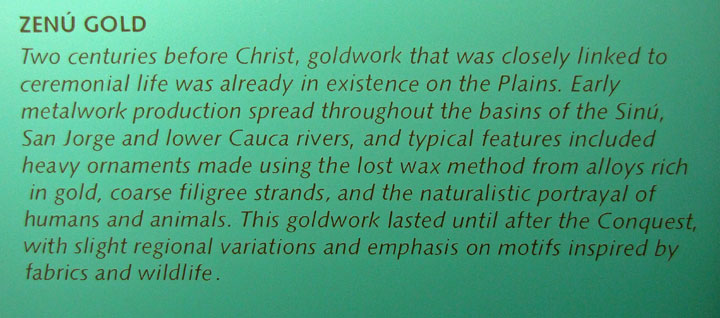
Around the time of the Spanish Conquest, the Zenúes, who were scattered over the
non-floodable grasslands, had a similar way of thought to their neighbors in the
River Magdalena valley and on the San Jacinto range.
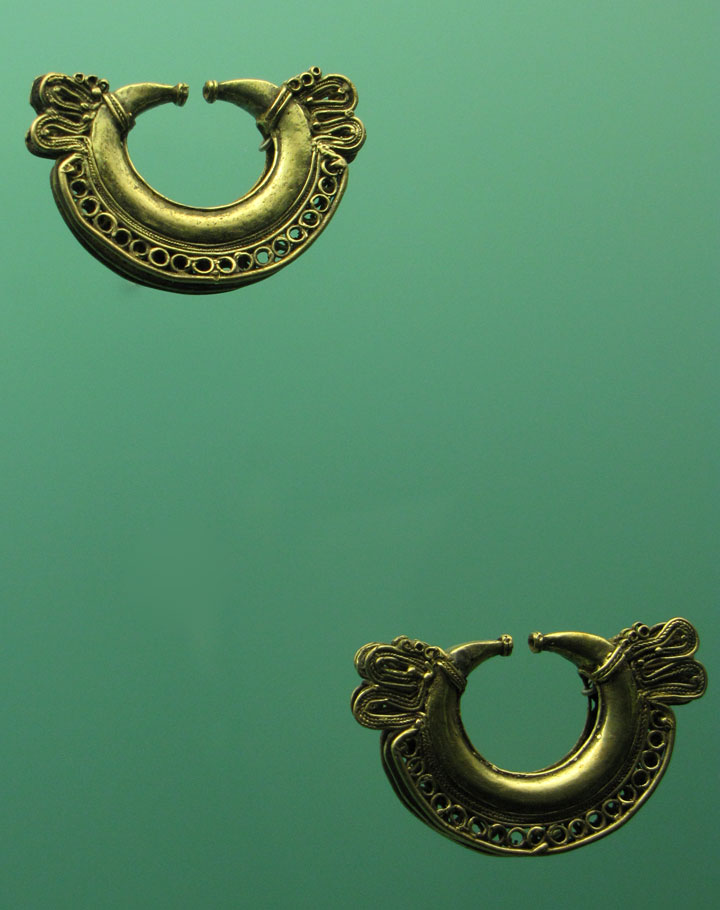
Greater Zenú territory extended from the valley of the River Sinú to the lower
River Cauca region. Farmers, fishermen, traders, goldsmiths and weavers were
organized in towns that were governed by local lords who paid tribute to
regional chieftains like Finzenú, who ruled over the River Sinú, Panzenú, leader
of the floodable San Jorge river plains, and the mythical chieftain Zenufana, in
the lower Cauca region, where gold deposits were found. Each of these had
complementary political, religious and economic duties.

Regional leaders who enjoyed prestige and sacred power organised the community
and ensured that it maintained the waterway system and held ceremonies at which
the population's cultural identity was restated.Leaders in the Ayapel region
were notable for the fact that they wore large, hammered, breast-shaped
breastplates, decorated with zoomorphous figures.

Communities who had settled on the grasslands that separate the Sinú and San
Jorge valleys, where Planeta Rica stands today, controlled barter activities.
Their governors wore ornaments made of good-quality gold, adorned with hanging
plates which glittered in the light.
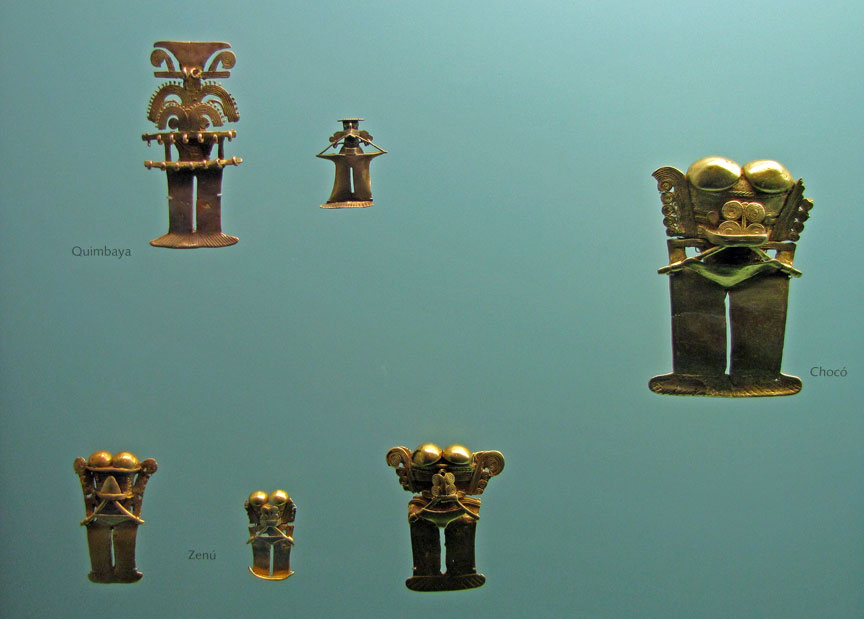
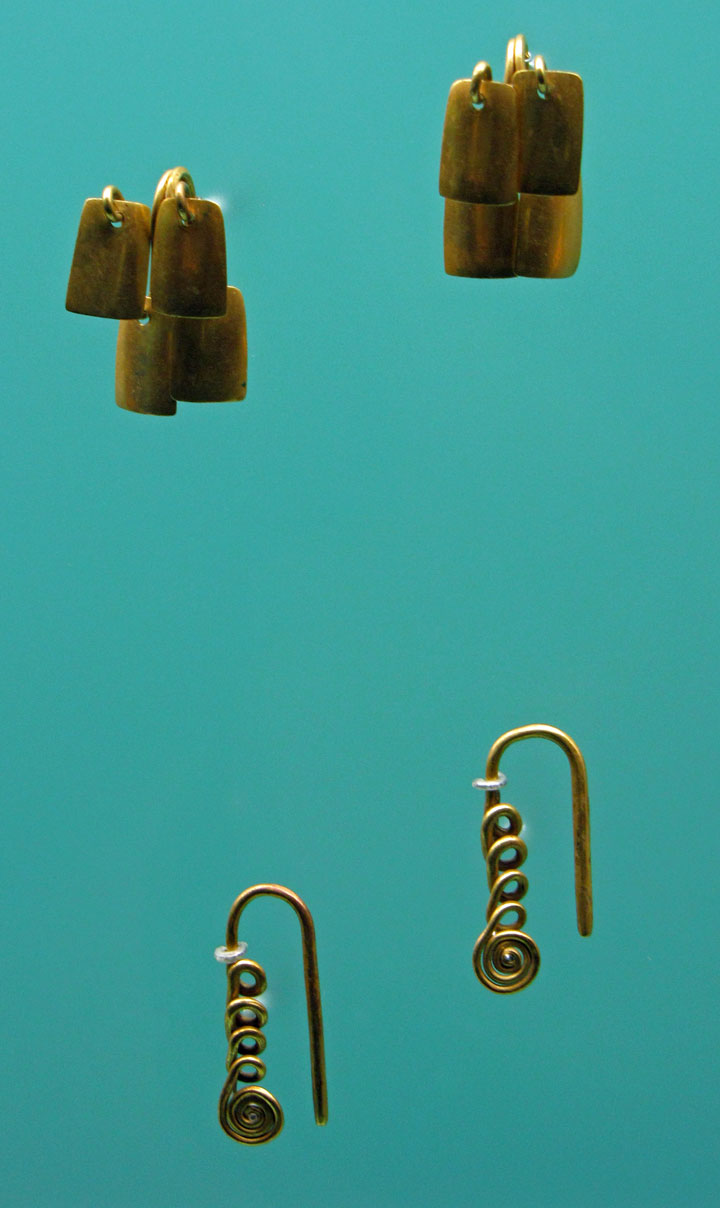
For centuries, the goldsmiths of the San Jorge and lower Cauca river regions
produced items like filigree earrings and ornaments hammered in fine gold en
masse. This metalworking tradition lasted until after the Spanish Conquest.
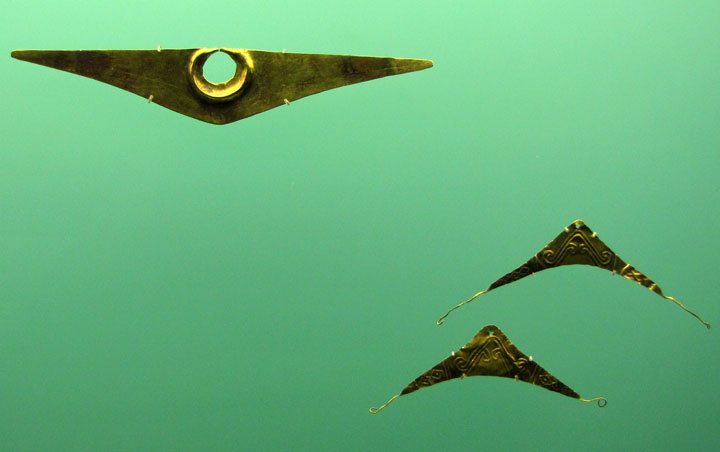
Spanish historian López de Gomara described 16th century mining activities in
the region in the following terms: ".....They pick up gold wherever they
want...... in that river and in others, and sometimes they even fish out nuggets
of pure gold, the size of eggs...." (1552).
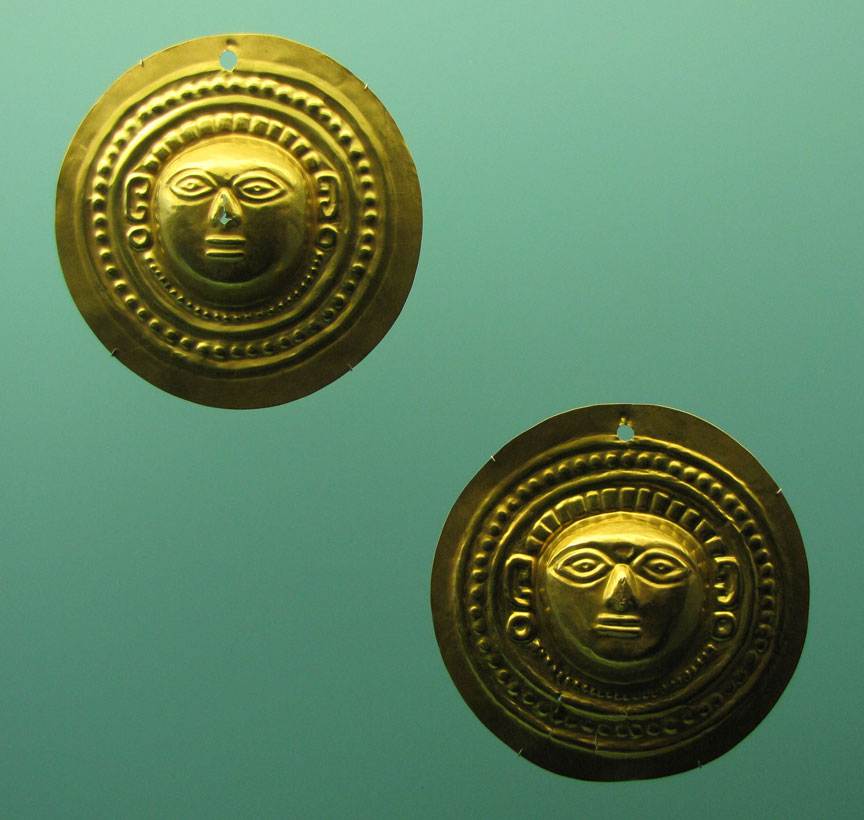
Zenú goldsmiths made numerous objects out of pure gold, by hammering. Refined
metal was hammered over stone anvils until sheets of the desired length and
thickness were obtained.
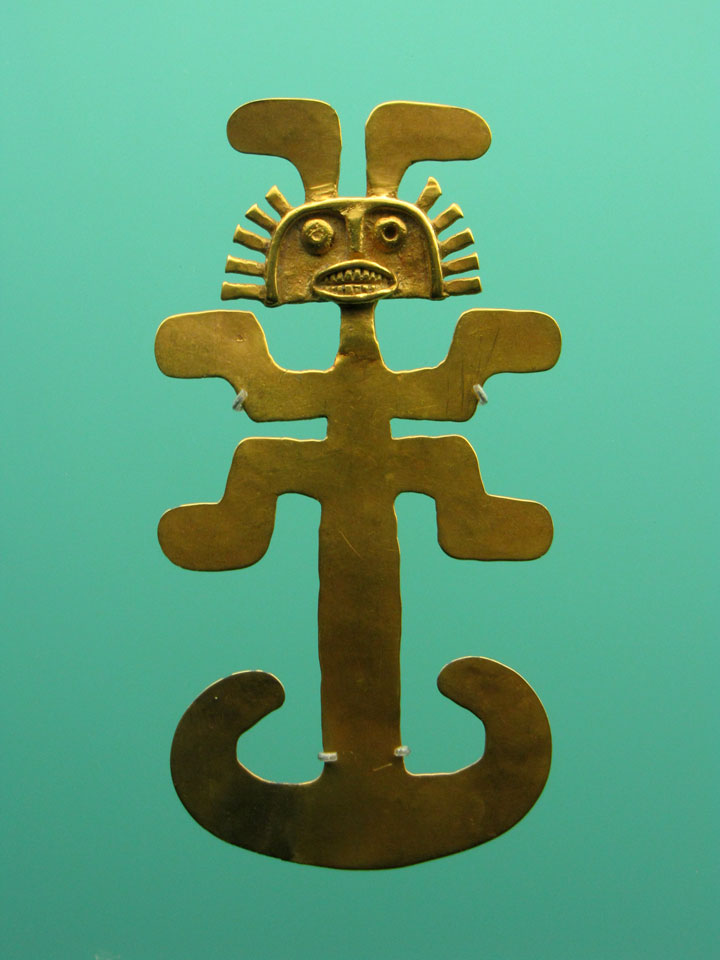
When the metal was hammered, it tended to fracture and harden; in order to regain its ductility, the goldsmiths heated the sheets until they were red hot, and then cooled them down so they could go on hammering them.
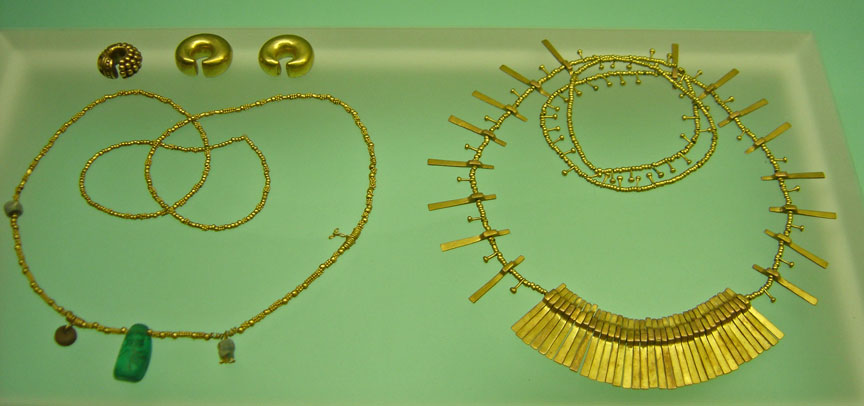
Embossed designs were achieved with chisels and awls, working on both sides
while the object was resting on soft but resistant surfaces.
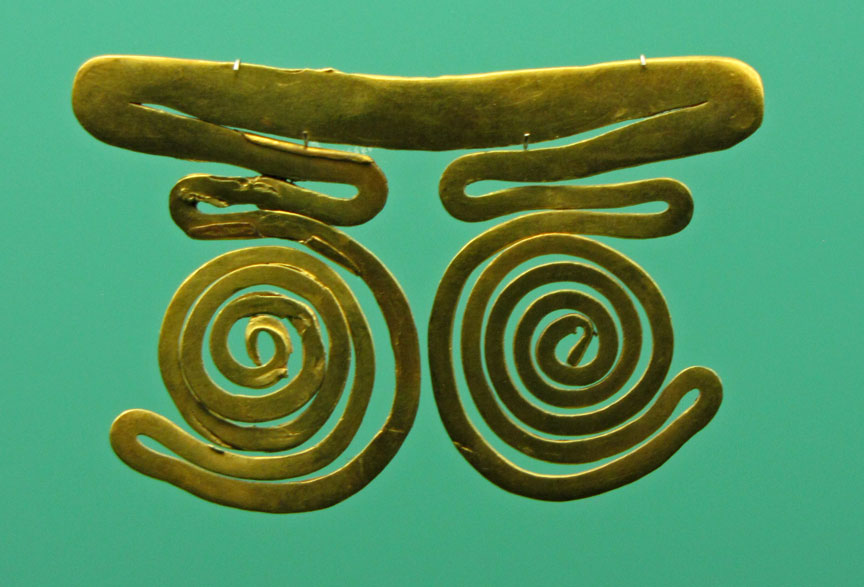
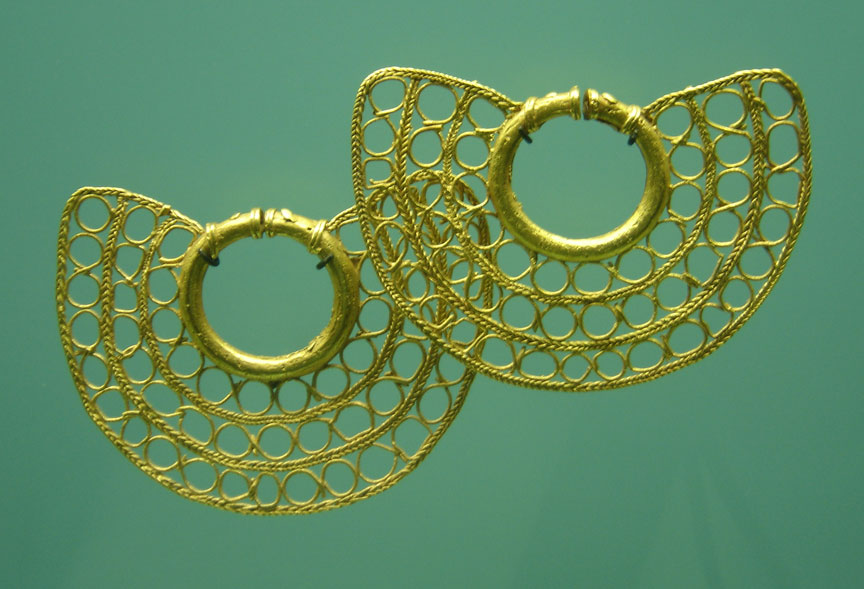
Casting using the lost wax technique was used for making thousands of filigree
earrings and reproducing highly realistic three-dimensional shapes.
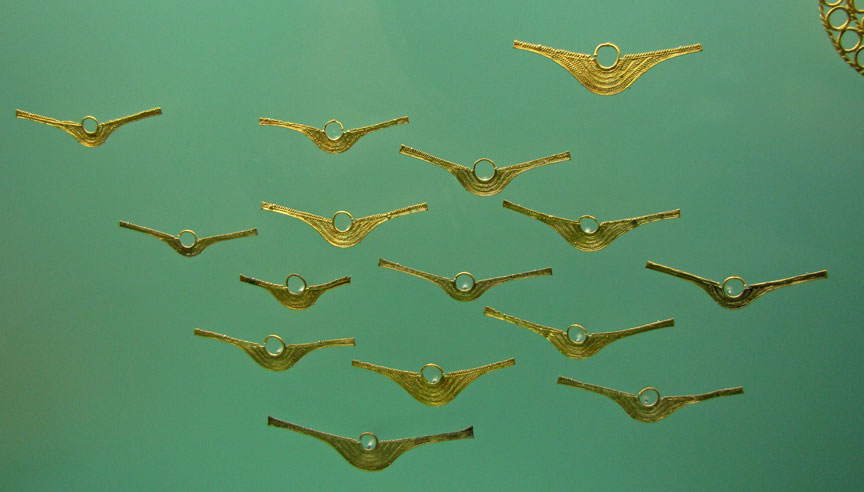
When hollow figures were being made, the design was first carved on a matrix
made of clay and ground coal. This model was coated with beeswax and finished
off with a funnel made of the same material, which was then used for pouring in
the metal. In the case of solid objects, the figure was formed directly in the
wax.x.
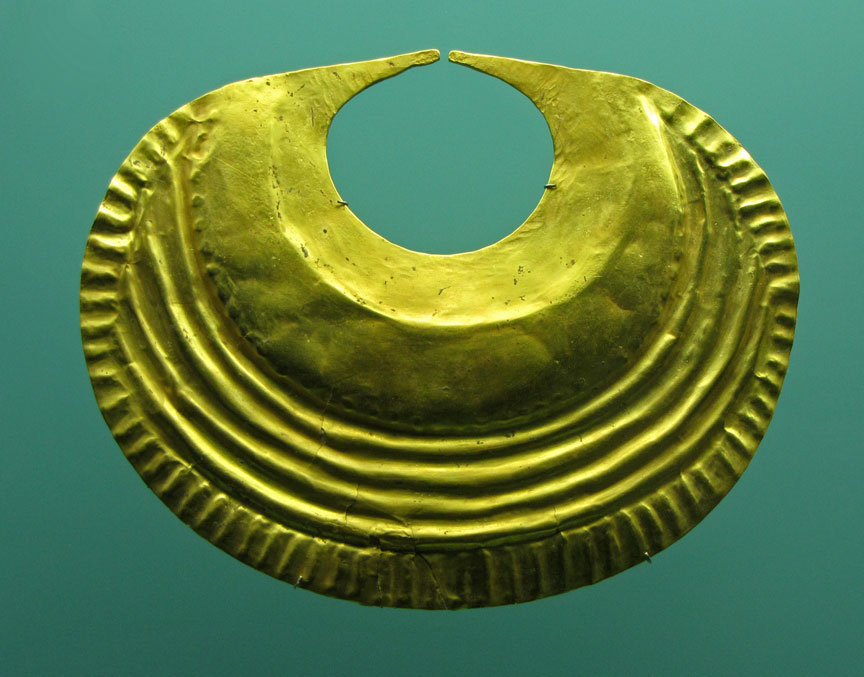
The coal and wax figure was then coated with successive layers of clay, which
formed a mould. When this was dry, it was heated so that the molten wax could be
removed, and liquid metal was poured into the empty space. When the mould was
cold, it was broken, the casting channels were cut, and the object was polished.
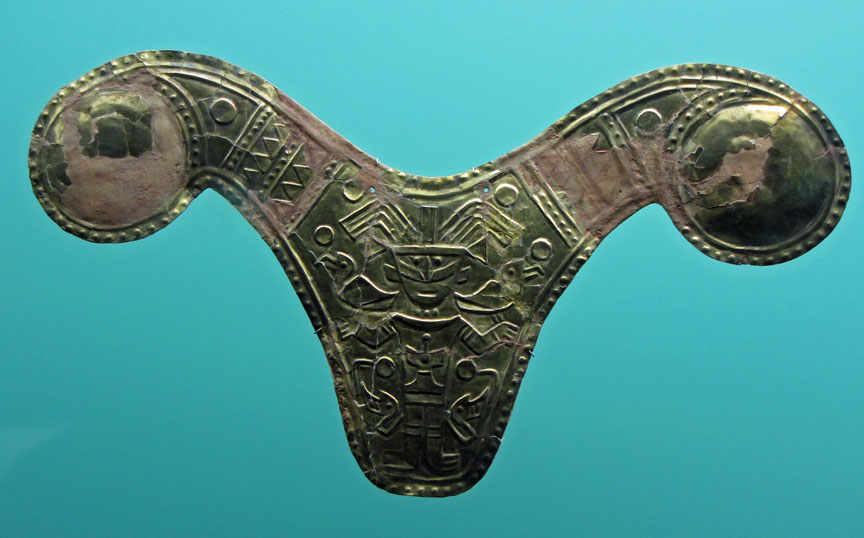
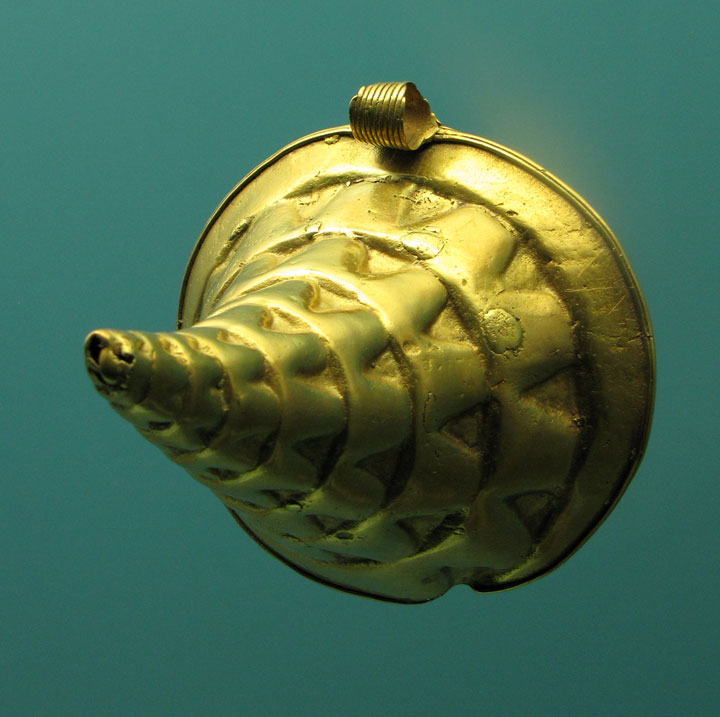
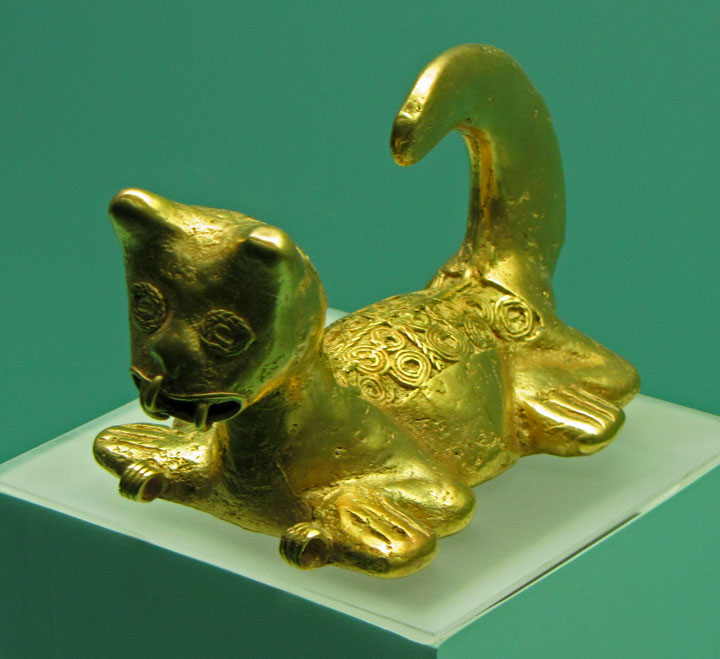
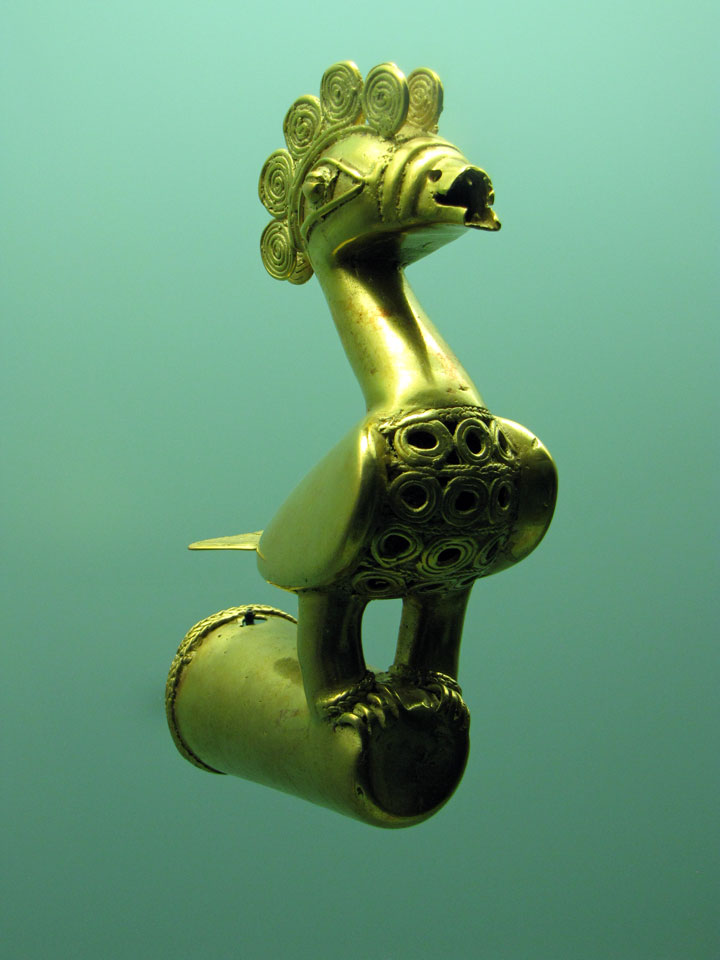
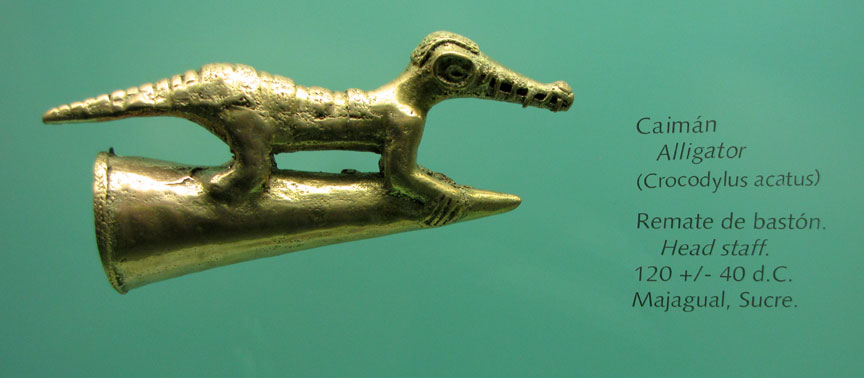
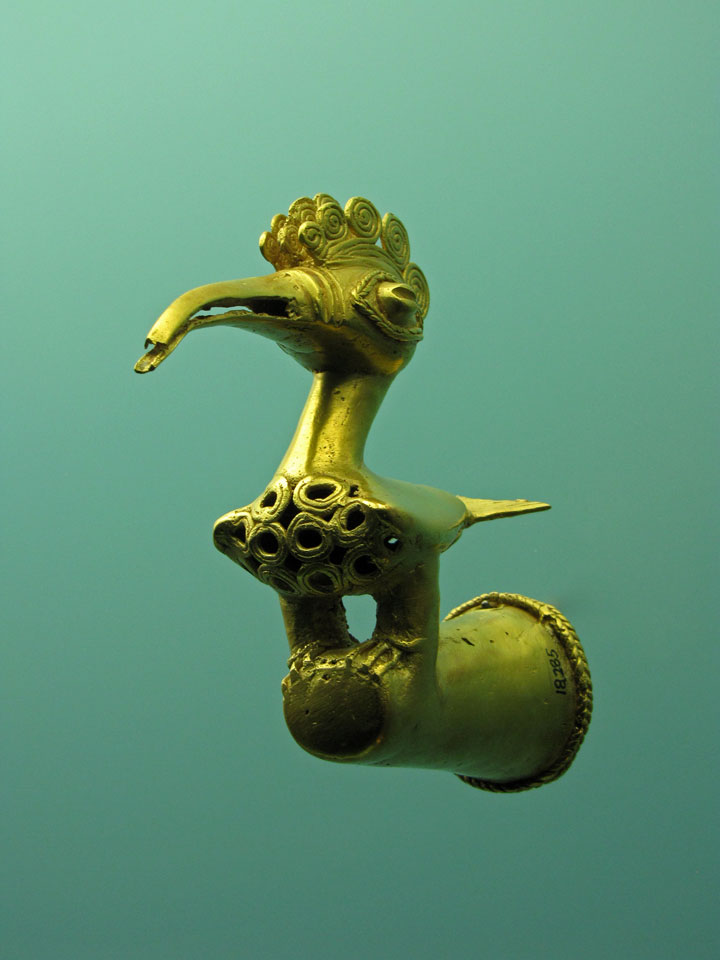



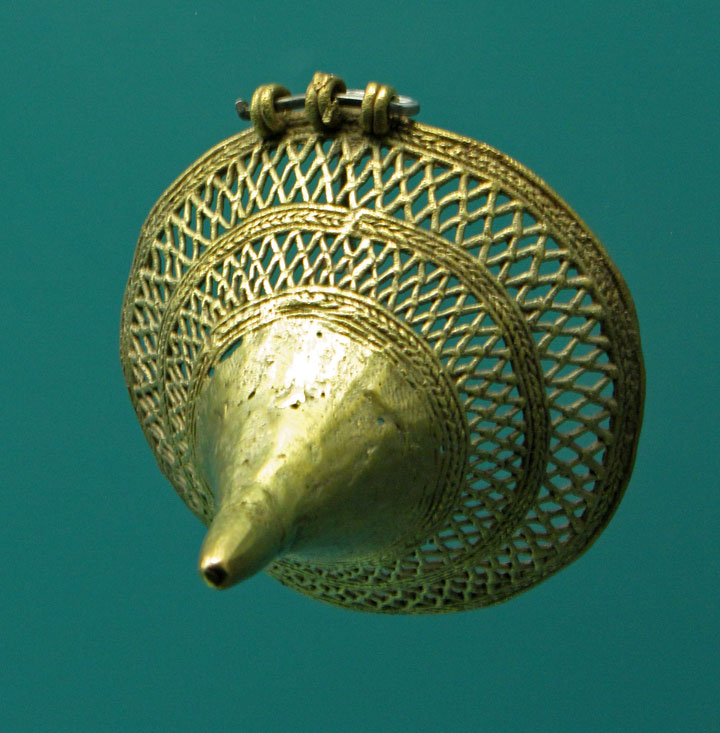
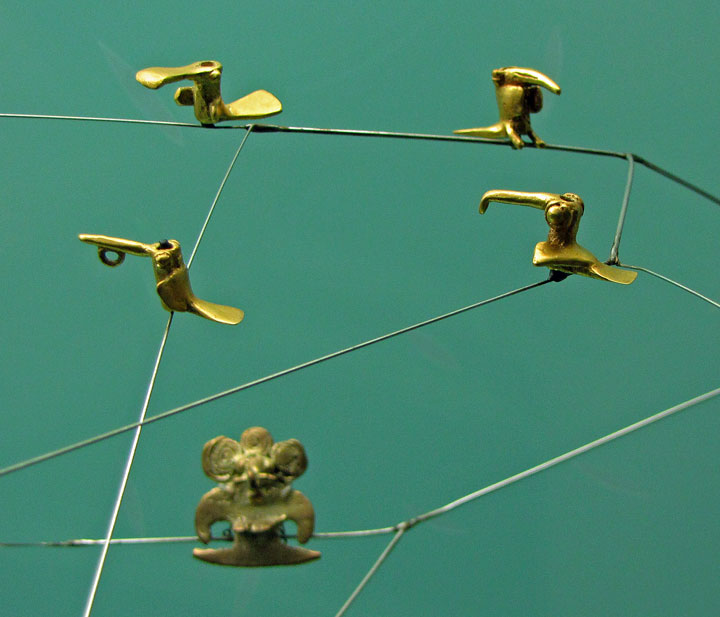
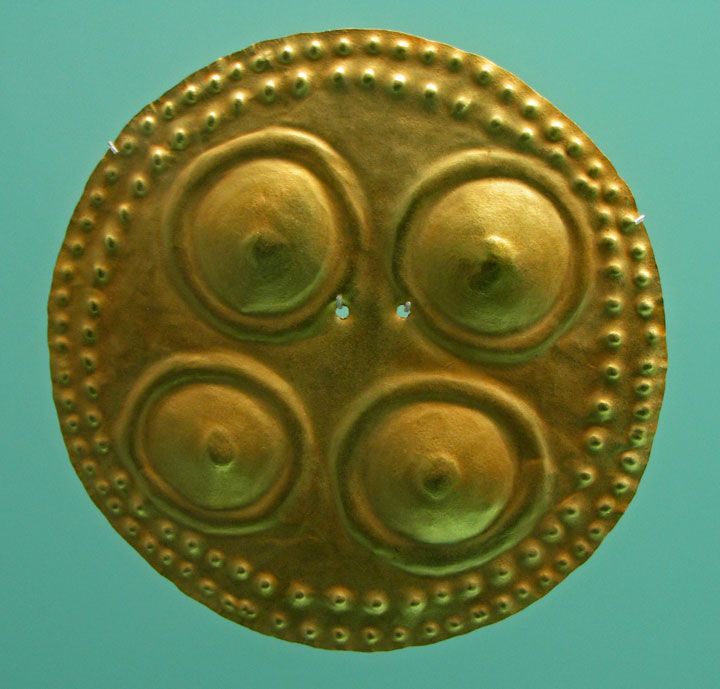
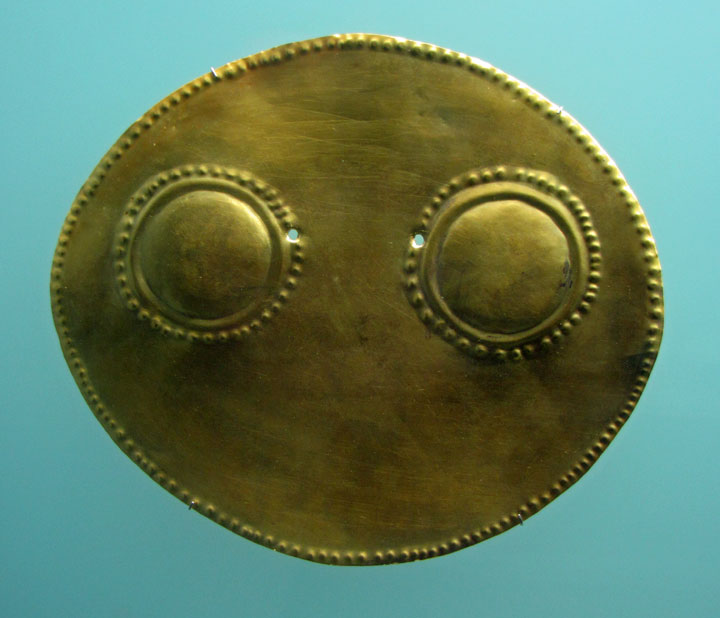
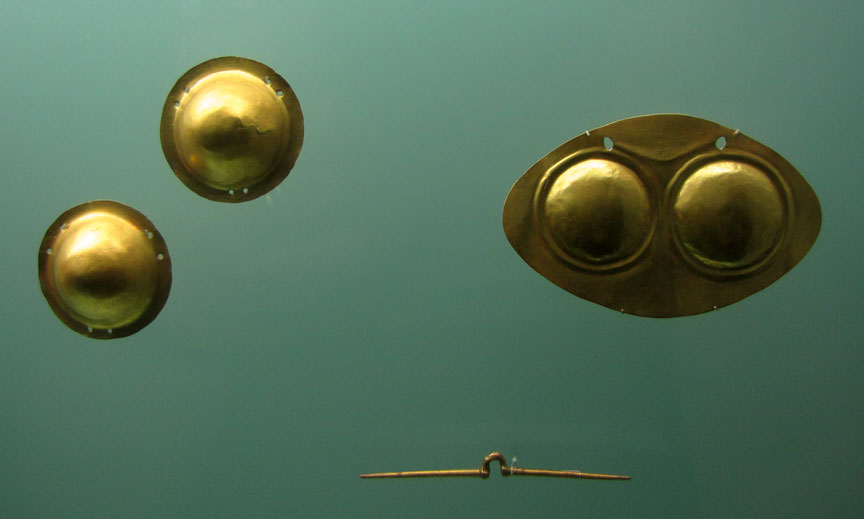
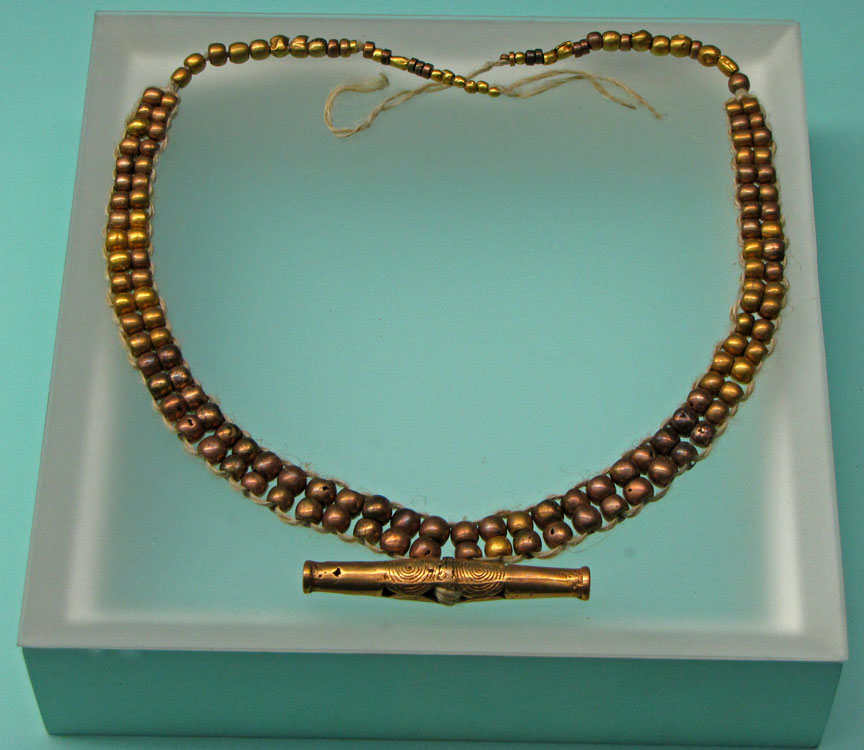
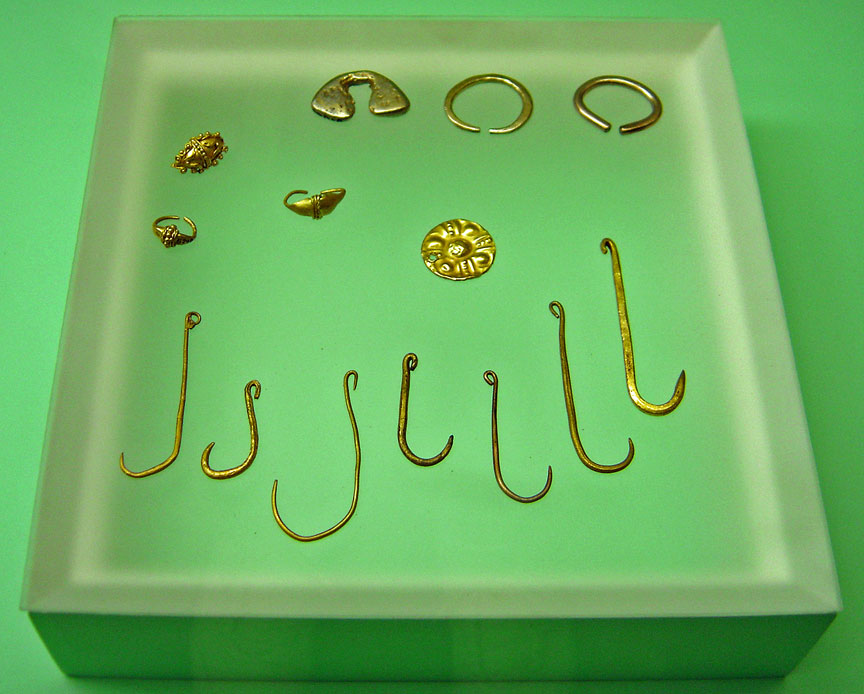
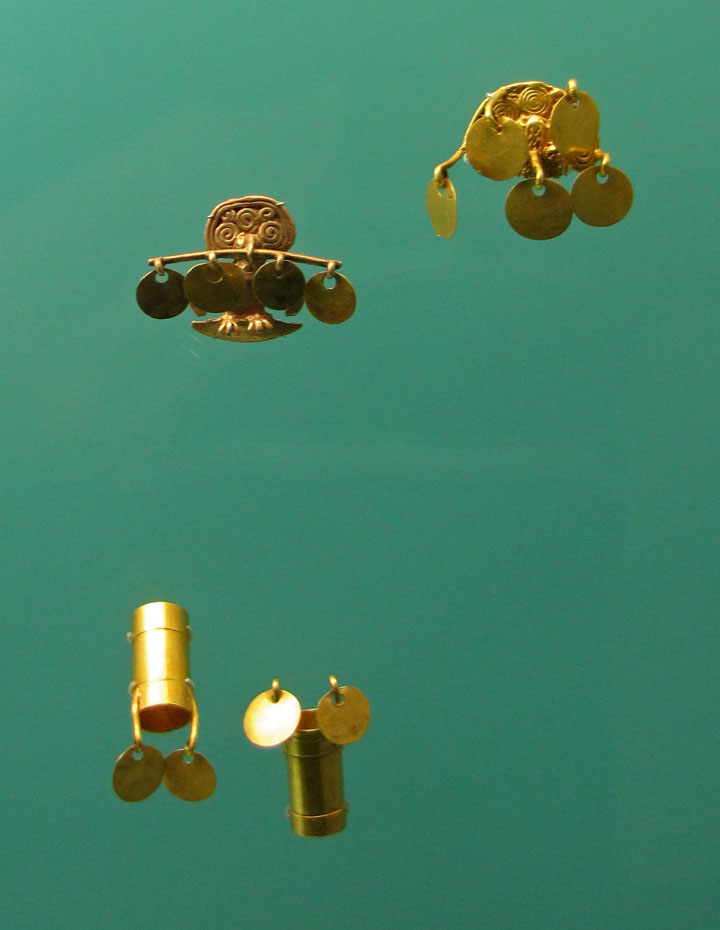
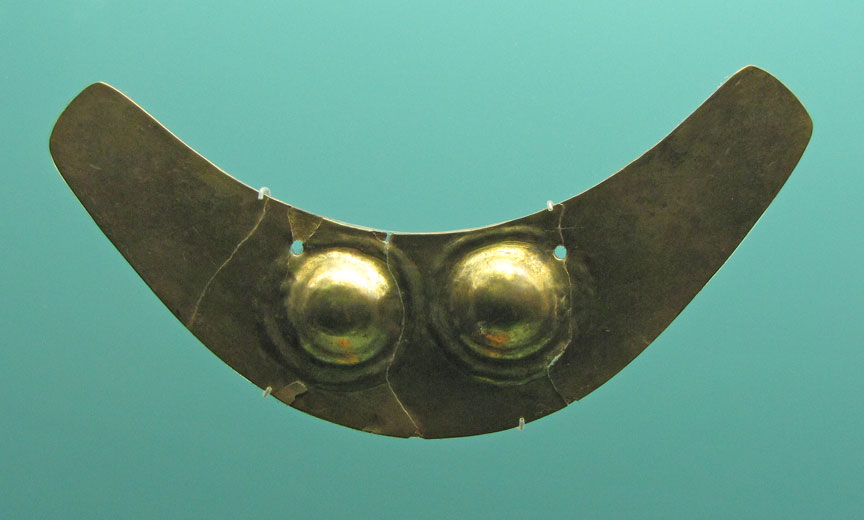
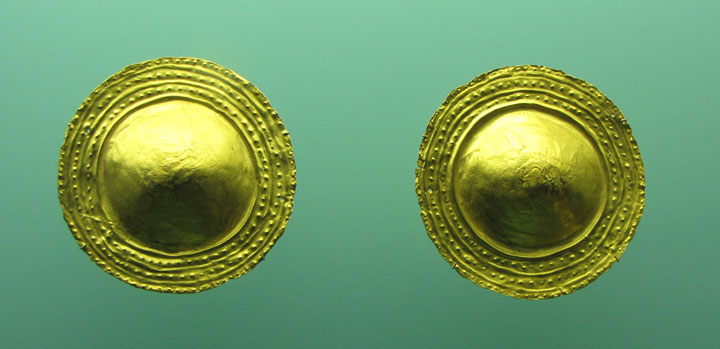
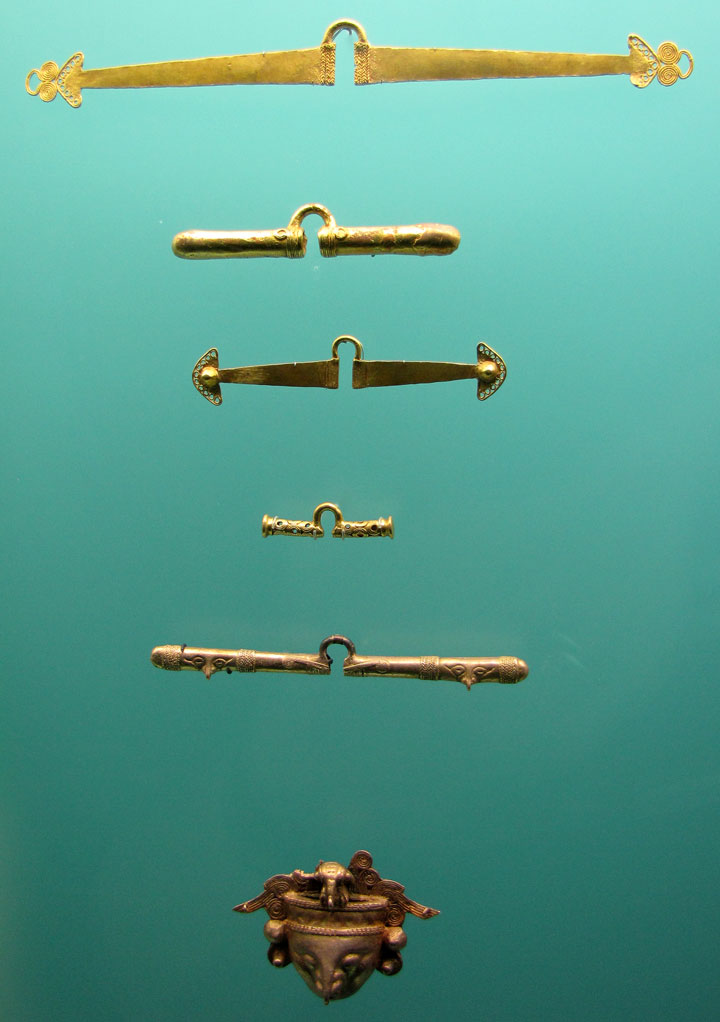
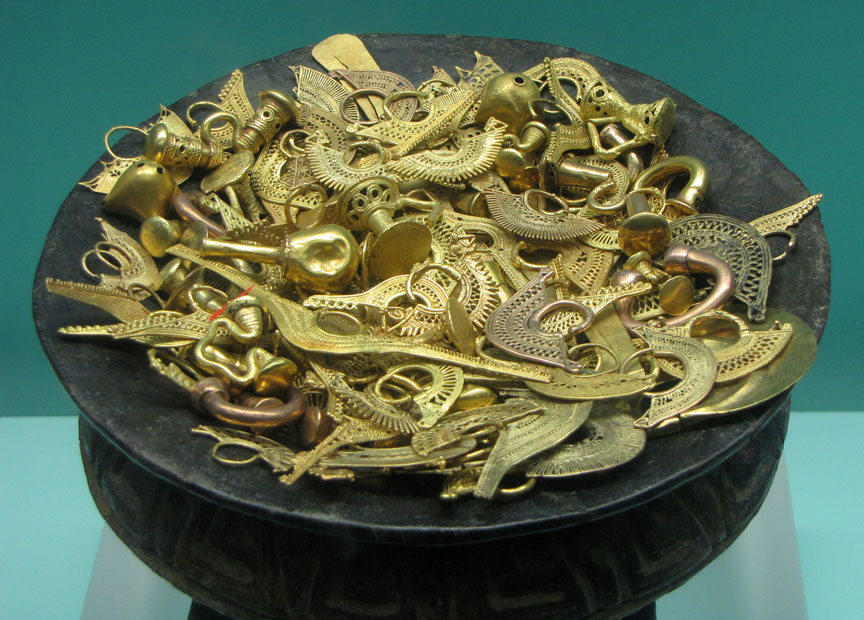
the odds and ends